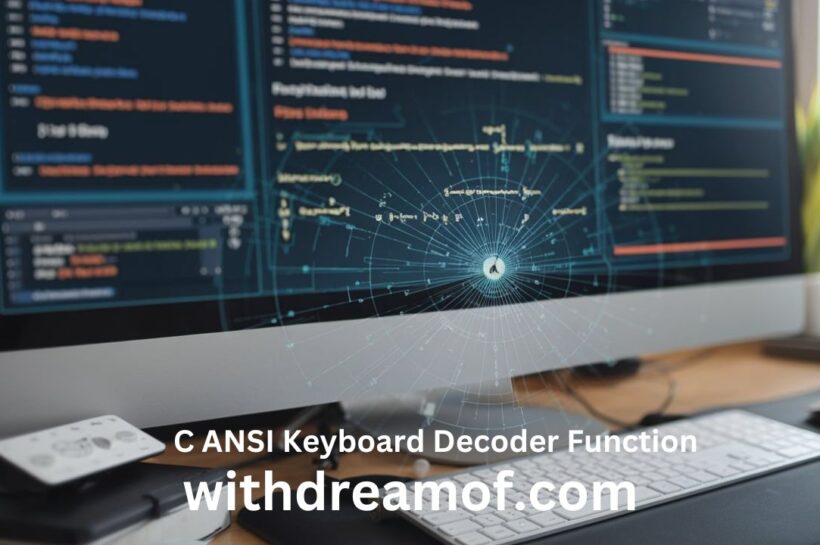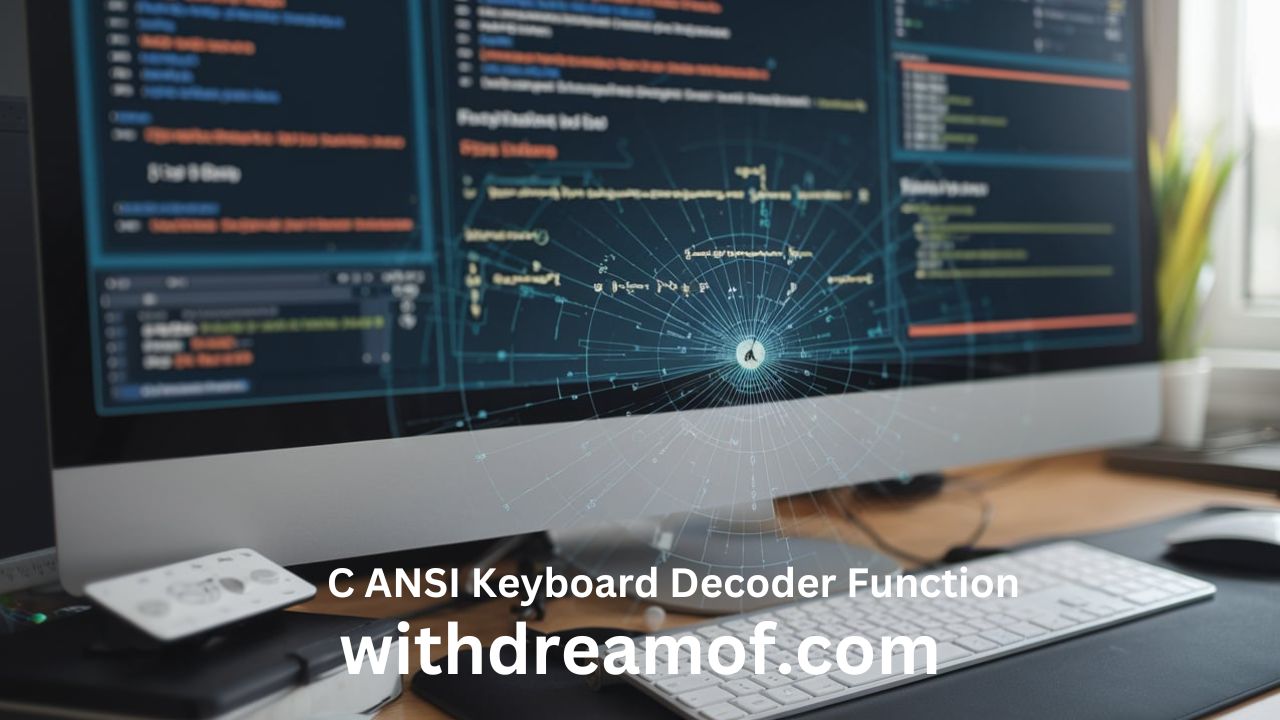The C ANSI keyboard decoder function plays a crucial role in interpreting keyboard input in ANSI C programs. By decoding keypresses into usable data, it enables efficient interaction between the user and the program. Whether developing interactive console applications or creating custom keyboard-driven tools, understanding how to implement this function ensures smooth keyboard input processing.
What Is a C ANSI Keyboard Decoder Function?
A C ANSI keyboard decoder function interprets raw keyboard input data and converts it into meaningful characters or control signals. In ANSI C, this function is often used in conjunction with libraries like <stdio.h> or platform-specific APIs to manage keyboard events. Developers leverage it to create applications requiring precise keyboard input handling, such as text editors, games, or command-line utilities.
Key Features of the C ANSI Keyboard Decoder Function
1. Character Decoding
The function translates raw keypress data into characters that the program can process, including special keys like Enter and Backspace.
2. Cross-Platform Compatibility
ANSI C ensures the function operates consistently across different platforms, maintaining uniform input decoding behavior.
3. Enhanced Input Handling
The decoder handles complex input scenarios, such as detecting simultaneous keypresses or processing function keys.
4. Lightweight Implementation
The function relies on minimal dependencies, making it efficient and suitable for resource-constrained environments.
How the C ANSI Keyboard Decoder Function Works
Step 1: Input Detection
The program detects a keypress using standard input functions, such as getchar() or getch().
Step 2: Raw Data Capture
The function reads the raw input data, which includes ASCII values or platform-specific keycodes.
Step 3: Decoding Process
The function maps the raw input to corresponding characters, key symbols, or control signals based on predefined logic.
Step 4: Output Generation
The decoded data is returned for further processing, such as displaying text or triggering actions.
Implementing a C ANSI Keyboard Decoder Function
Step 1: Include Required Libraries
Start by including standard libraries like <stdio.h> for input and output operations.
Step 2: Define Key Mappings
Create a mapping for key codes and their corresponding characters or actions.
Step 3: Capture Input
Use a function like getchar() to read keypresses.
Step 4: Decode the Input
Implement a logic structure, such as a switch statement, to map the raw input to corresponding output.
Step 5: Return Results
Return the decoded value or execute associated actions within the program.
Applications of C ANSI Keyboard Decoder Function
1. Text Editors
The function interprets keyboard input for text insertion, deletion, and navigation in console-based text editors.
2. Gaming
In games, it decodes keypresses to control characters, navigate menus, or trigger in-game events.
3. Command-Line Tools
The decoder enhances user interaction by processing commands, shortcuts, or special keys in CLI applications.
4. Educational Programs
Teaching tools use the function to handle user responses and simulate keyboard-based interactions.
Advantages of Using the C ANSI Keyboard Decoder Function
Improved Input Flexibility
The function allows precise control over keyboard input, accommodating diverse application needs.
Cross-Platform Consistency
Programs using this function behave consistently across systems, thanks to ANSI C standards.
Enhanced User Interaction
Real-time input processing improves responsiveness and user experience in interactive applications.
Customizable Logic
Developers can adapt the function to handle unique key mappings or specialized input scenarios.
Challenges in Implementing a C ANSI Keyboard Decoder Function
Platform-Specific Variations
Different operating systems handle raw input differently, requiring additional logic for compatibility.
Complex Key Combinations
Handling simultaneous keypresses or key sequences increases implementation complexity.
Limited by Standard Libraries
Standard ANSI C libraries offer basic input handling, necessitating third-party tools for advanced functionality.
Tips for Efficient Implementation
1. Use Clear Key Mappings
Define constants for keycodes to make the code easier to read and maintain.
2. Test Across Platforms
Run the program on multiple systems to ensure consistent input decoding.
3. Optimize for Performance
Minimize processing overhead by using efficient logic structures and avoiding redundant operations.
4. Incorporate Error Handling
Handle unexpected input gracefully to prevent program crashes or unintended behavior.
Comparing C ANSI Keyboard Decoder Function With Modern Alternatives
| Feature | C ANSI Keyboard Decoder | Modern Libraries (e.g., SDL, ncurses) |
|---|---|---|
| Ease of Use | Basic Implementation | Requires Library Installation |
| Compatibility | Cross-Platform | Cross-Platform |
| Advanced Features | Limited | Extensive (e.g., Mouse Support) |
| Resource Usage | Minimal | Higher |
Advantages of Advanced Implementation
Multi-Key Support
The function handles complex sequences like arrow keys or function keys.
Improved User Interaction
Enhances application usability by supporting intuitive navigation and controls.
Scalability
The modular structure allows developers to extend functionality without significant changes.
FAQs
What is the C ANSI keyboard decoder function?
It processes raw keyboard input into usable data for applications developed in ANSI C.
How does the function handle special keys?
By mapping raw input codes to predefined constants, the function identifies and processes special keys like Enter or Escape.
Can it detect multiple simultaneous keypresses?
Basic implementations struggle with this, but advanced logic or third-party libraries can address such requirements.
What are its applications?
The function is used in text editors, command-line tools, games, and educational software for interactive input processing.
Are modern libraries better alternatives?
Modern libraries offer advanced features, but the C ANSI keyboard decoder remains efficient for basic, resource-constrained applications.
How do I handle platform-specific input issues?
Incorporate conditional compilation or use platform-agnostic libraries to address differences in input handling.
Conclusion
The C ANSI keyboard decoder function remains a vital tool for developers requiring precise keyboard input processing in their applications. By understanding its implementation and leveraging its capabilities, developers can create efficient, user-friendly programs. Whether for simple utilities or complex interactive applications, this function exemplifies the power and flexibility of ANSI C.











